The History of Traditional Patek Philippe and Tiffany Watches
I think most Japanese people know of Tiffany, and I think anyone with even the slightest interest in watches knows of Patek Philippe.
What they both have in common is that they are both ultra-luxury brands.
Above Tiffany are Louis Vuitton and Hermes, but when it comes to watches, Tiffany has products that surpass them.
This is a watch that is double-branded with Patek Philippe.
In this article, we will explain how Tiffany and Patek Philippe became connected and how much this double-named watch is worth, focusing on the history of Tiffany.
By reading this article to the end, you will not only be wearing branded items, but you will also be able to explain "Why do I wear this brand?" so please stay with us until the end.
Tiffany History
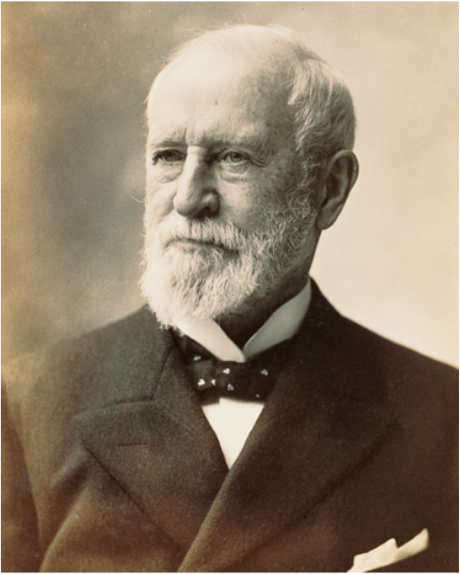
Tiffany (originally called Tiffany, Young & Ellis, now Tiffany & Co.) was founded by a man named Charles Lewis Tiffany . The company was founded in 1838 as a stationery and accessories store in New York, USA, and began selling jewelry and watches in 1847.
The reason why they started dealing in this type of jewelry was that at the time, the whole of Europe was in a state of unrest due to the February Revolution.
Amidst such chaotic circumstances, an increase in purchases of gems and precious metals from European celebrities helped the company grow into a maison dealing in high-quality silver products and jewelry.

Taking advantage of this economic boom, in 1853, Tiffany erected a 9-foot bronze statue of Atlas ( a god in Greek mythology ) holding up a clock in front of its flagship store at 550 Broadway.
It was one of New York's first public clocks and quickly became a famous landmark, with New Yorkers setting their own time by it.
The Atlas statue is an iconic clock in New York and a symbol of Tiffany's success.
This shows how Tiffany & Co. was committed to watches from an early stage.
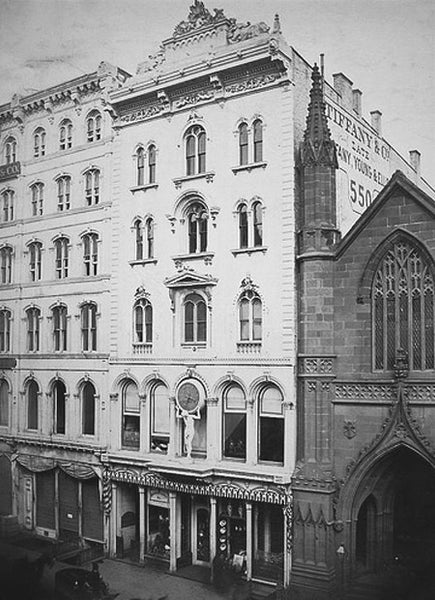
*The Atlas clock ( a Greek god ) that was displayed above the main entrance of Tiffany & Co. at 550 Broadway in the 1850s.
When Tiffany's flagship store moved, the Atlas statue also moved.
In the 1870s it was displayed in Union Square, in 1905 at 401 Fifth Avenue in Manhattan, and from 1940 directly above the main entrance of the store at 727 Fifth Avenue.
The Atlas clock was displayed in the facade of a famous granite and marble building, and Tiffany & Co. became famous without any advertising.

*The Atlas clock displayed in front of Tiffany's flagship store in Union Square, which moved there in the 1870s.
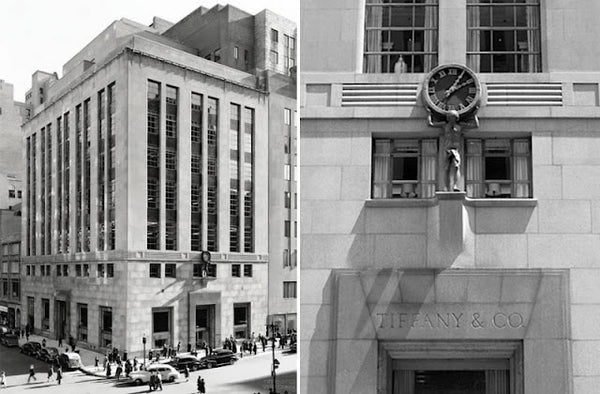
*Tiffany & Co. flagship store and Atlas Watches, which moved to their current location at 57th Street on Fifth Avenue in the 1940s
To celebrate this iconic Tiffany timepiece, a wristwatch called the Atlas was released in the 1980s.
This clock features a rugged, embossed design that adds shine and height to the Roman numerals that indicate the hours.
In 1995, the Atlas collection was completed with the creation of both men's and women's watches with the same Roman numeral motif design.
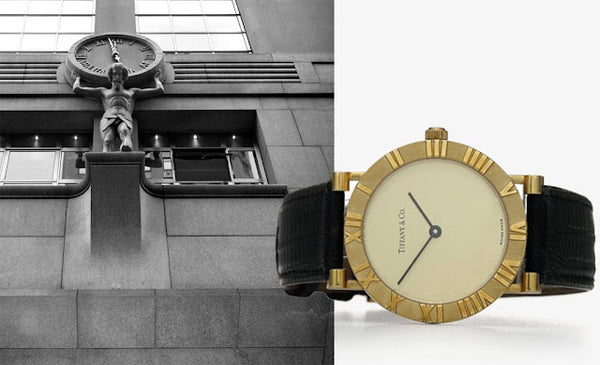
Contract with Patek Philippe
In 1854, Tiffany signed a contract with Patek Philippe and became the first American retailer of Patek Philippe watches.
A few years later, in 1868, Tiffany introduced the split-seconds Tiffany Timer, intended for use in sporting events as well as in engineering and science.
This is believed to have been America's first chronograph.
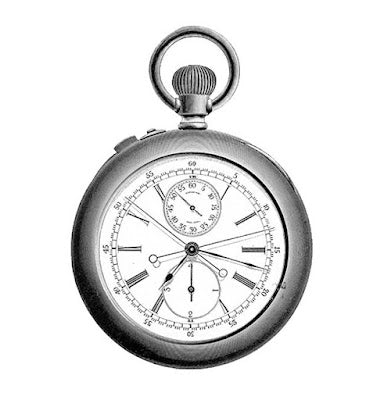
Around this time, Tiffany also began manufacturing its own watches.
Demand for Tiffany's sophisticated watches continued to grow, so in 1874, the company established its own factory in Cornavin, Geneva, Switzerland.
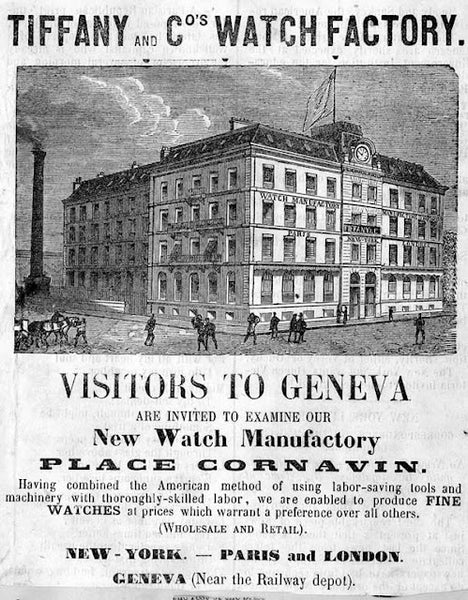
The factory was particularly skilled in the production of gold-colored pocket watches that chimed the time every quarter hour and quarter hour, diamond-studded lapel watches, and watches with enamel dials featuring floral motifs and incised gold decoration.
Therefore, from around this time, a system was established where the overall design of the watch was done in New York and manufactured in Switzerland.
Tiffany's Swiss factory was later sold to Patek Philippe, who continues to produce movements for Tiffany in the factory they purchased.
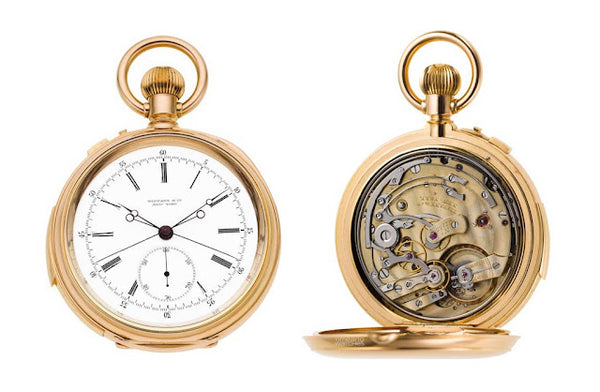
*A circa 1884 Tiffany rose gold pocket watch with minute repeater, split seconds and enamel dial.
Over the years, Tiffany has pioneered many key watchmaking technologies.
As Tiffany continued to improve its watches, it received its first patent in 1875.
This is a patented technology related to attaching watch hands, anchor escapements, and adjusting the time.
During this time, Tiffany watches were receiving numerous awards for their excellence.
For example, at the 1889 Universal Exhibition in Paris, the American Wild Rose Lapel Watch, created by chief designer Paulding Farnham with enamel and diamonds, won an award.
The clock case and astronomical clock also won medals at the Chicago World's Fair in 1893.

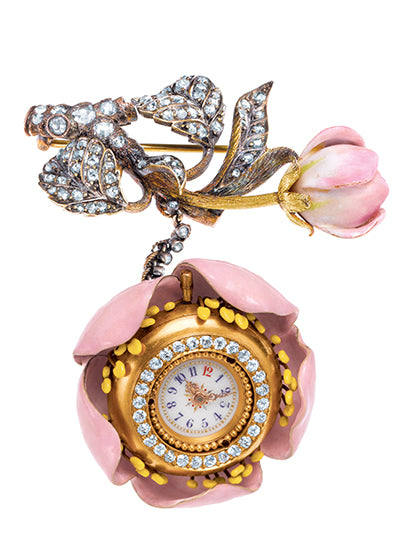
*Tiffany lapel watch released in 1989
Tiffany's friendly customer support
By the end of the 19th century, Tiffany had become a world-renowned jeweler and watchmaker with over 1,000 employees and branches in London, Paris and Geneva.
Tiffany has always been very focused on customer service.
One incident is cited as an example of courteous customer support.
Originally, confusion arose because each region in North America had its own local time system.
To put an end to this situation, standard time zones were introduced in 1883 after American and Canadian railroad companies decided to divide the North American continent into four time zones.
As a result, Tiffany's customer service department was handling the massive volume of watches that were brought to them - over 400 a week - by customers who had previously purchased watches.
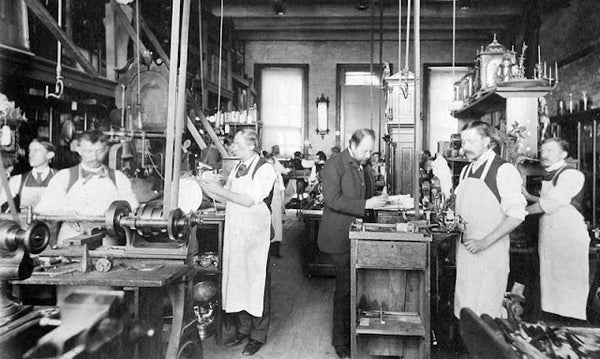
Uses radium, a luminous paint, on the hands
In 1903, Chief Gemologist George Kunz patented a green luminous paint based on research by William J. Hatter using a mixture of radium and zinc sulfide.
Kunz was able to develop a special paint by mixing radium barium carbonate with zinc sulfide and linseed oil.

*George Kunz and his early pocket watches with luminous hands and numbers
This paint began to be used on the numbers and hands of watch dials to make the time easier to read in the dark.
At the time, the effects of radiation exposure were not yet known, so radium was used in many products, including food, toothpaste, and cosmetics.
Although safer substances were later substituted for radium, the development of luminescent paints using radium undoubtedly had an impact on the watch industry.
The early 20th century also saw great advances in the miniaturization of watches.
Especially during the Art Deco period of the 1920s and 1930s, the miniaturization of watches made women's watches designed by Tiffany so popular that they were difficult to obtain.
Clocks and watches made from this period onwards continue to inspire Tiffany designs today.

*An Art Deco clock from the 1920s (left) and a current Art Deco clock from Tiffany's cocktail collection (right)
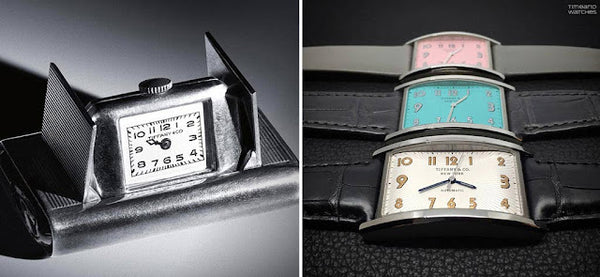
*Tiffany's folding travel clock from the 1940s (left) and the East West collection that inspired it and was released in 2015 (right)
One watch holds a special place in the history of Tiffany watches.
It is a gold calendar watch that was presented to American President Franklin D. Roosevelt on his birthday in 1945.
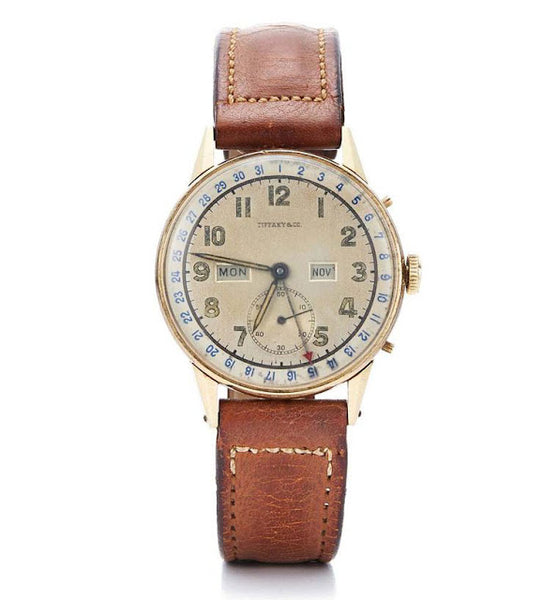
*Tiffany calendar watch given to President Franklin D. Roosevelt in 1945
The back of this watch is inscribed with the words "Franklin Delano Roosevelt; With Loyalty, Respect and Affection."
President Roosevelt wore this watch at the historic Yalta Conference in 1945.
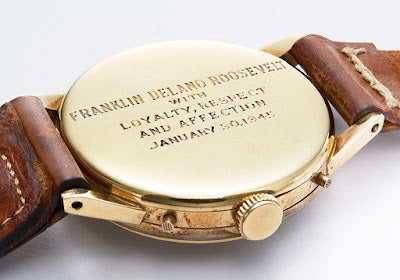
70 years later, this watch has inspired the new CT60 collection.
The "CT" in the name CT60 stands for Charles Tiffany, and the number 60 symbolizes 60 seconds full of possibilities in the cutting-edge lifestyle of New York, known as "The Big Apple."

The CT60 collection marked the beginning of Tiffany's establishment of a watch company in Switzerland.
With the CT60, all manufacturing and assembly is now completed in Switzerland.
The watch's New York inspiration is clearly evident, as evidenced by the word "New York" written beneath the Tiffany name on the face of the watch, but it is exquisitely crafted and finished in keeping with traditional Swiss watchmaking techniques.
Combining beautiful fine jewelry design with uncompromising Swiss craftsmanship, the women's Metro collection reinforces Tiffany's legacy as a diamond brand.
Metro Collection watches feature a sparkling round-cut diamond on the crown, and each diamond is individually numbered, so each owner can feel that their watch is unique.
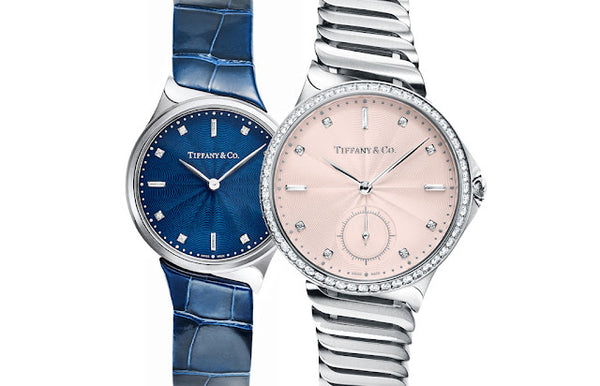
summary
Thus, the special relationship between Tiffany and Patek Philippe continues to this day, with Patek Philippe watches with Tiffany dials being highly coveted at auctions around the world.



